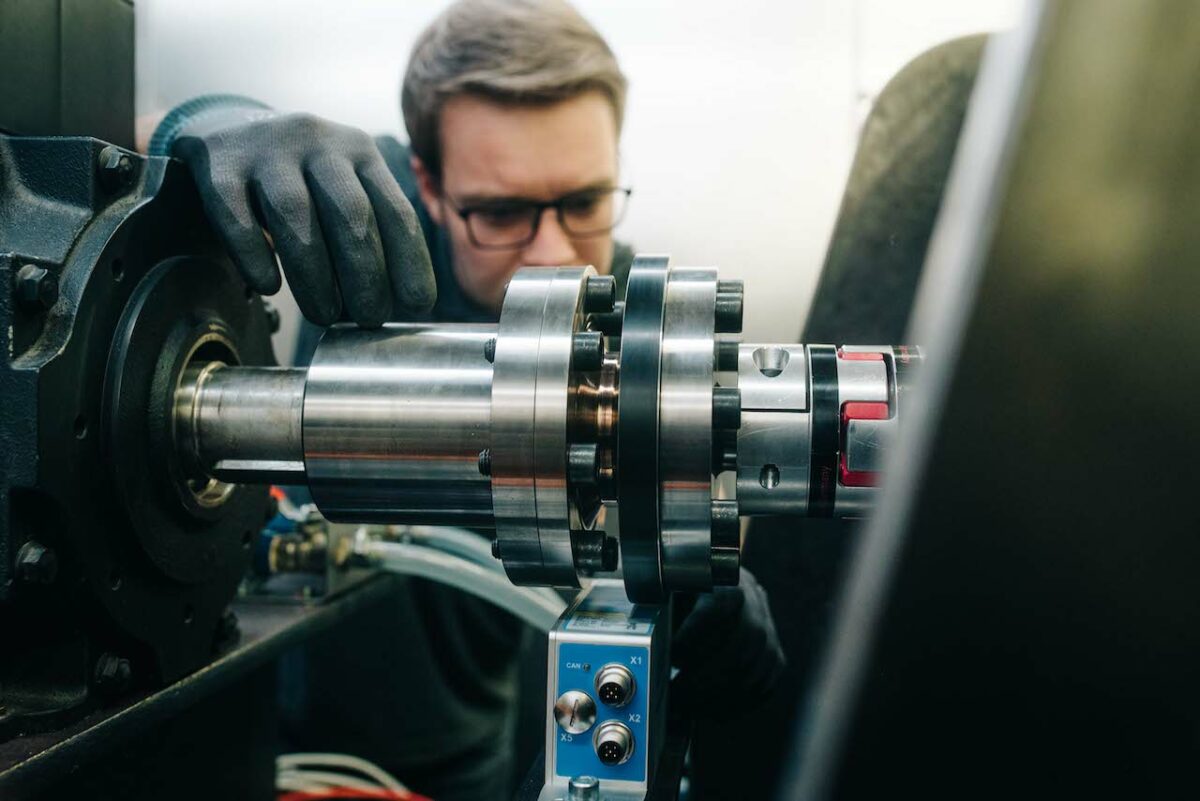BMW-sponsored start-up DeepDrive believes focusing on better e-motor designs could make EVs more attractive for both OEMs and consumers. By Will Girling
Electric motors (e-motors) are an integral part of the electric vehicle (EV) powertrain, converting electrical energy from the battery and inverter into mechanical energy for propulsion. As global EV adoption continues to grow, the e-motor market’s value will naturally follow: from US$24bn in 2024 to US$74bn in 2032, according to Fortune Business Insights.
So far, the segment has not wholly coalesced around a single design or e-motor class. Perhaps the most common is radial flux: coils arranged cylindrically and a magnetic field generated perpendicular to the shaft. However, the automotive industry’s pursuit of higher torque and power density has also led to investment in axial flux: coils arranged relatively flat with a magnetic field parallel to the shaft. This design is less cumbersome and generally more efficient. In 2021, Mercedes-Benz acquired axial flux e-motor maker Yasa to explore its next-generation potential.
Meanwhile, other automakers like BMW continue to bet their money on radial flux, albeit with improved performance. Also in 2021, BMW scouted and partnered with Munich-based start-up DeepDrive to develop new technology capable of delivering greater EV power and range with this geometry. In July 2024, DeepDrive’s e-motor solution finally hit the road.
Dual rotor motors
“Axial flux motors have many advantages, but they’re very difficult and expensive to manufacture for large volume automotive projects,” says Felix Pörnbacher, Co-Founder and Co-Chief Executive of DeepDrive. As such, the simpler topology of radial flux motors may continue to make them more practical for achieving the goals of electrification. He tells Automotive World that an e-motor’s rotor spec can make a crucial difference in boosting its overall performance.
Traditionally, a radial flux e-motor has one rotor that rotates inside of a stator, a non-moving component equipped with a copper winding. Inducing a current in the winding of the stator creates a magnetic field that leads to a rotation of the rotor. DeepDrive’s innovation is to place two rotors in the same unit—internal and external to the stator—and drive them simultaneously. “This results in a much greater utilisation of active material,” explains Pörnbacher. “That means we have an e-motor with higher torque and energy efficiency that is still easy and affordable to mass produce.”
DeepDrive claims to be the first to combine the merits of both radial and axial flux motors in one product. Its portfolio includes a range of different model variants, including the RM 1800 for mid-size EVs (1,800Nm of torque and 160kW of power) and the RM 300 for micromobility vehicles (300Nm/18kW). “Overall, we can achieve 20% higher efficiency and range than a single rotor motor, which has been verified by OEMs on-road.” Pörnbacher adds that these units are compact and lightweight enough to work for both in-wheel and central drive systems.
Contributing to e-mobility’s future
Although he calls the dual rotor motor’s design simple to manufacture, Pörnbacher notes that several engineering challenges had to be overcome first. These included cooling, torque transfer, power electronics, and motor control. The building blocks of DeepDrive’s patented solution were a new stator design with a specific copper winding and hardware and software to control the operation of its two rotors. The concept earned a German Innovation Award from the Federal Ministry for Economic Affairs and Climate in April 2024.
“Solving these problems is our big contribution to the development of e-mobility,” says Pörnbacher. Asked why major OEMs have not created their own solutions, he states that high-volume e-motor production is a recent phenomenon that is only “two or three generations” deep. With other aspects of the EV transition requiring more immediate attention, the field is open for smaller innovators to fill the gaps. “E-motors is a very cross-disciplinary field. You need electrical and mechanical engineers, designers, software developers, etc. DeepDrive assembled a group of experts and allowed them to take risks that larger companies wouldn’t allow.”
At the time of writing, DeepDrive hints that small-series production could finally commence by 2026/27, with large-series (100,000s of vehicles) to follow shortly after from 2028 onwards.
David and Goliath together
As EV growth continues to lag behind expectations, many automakers are attempting to cut costs without jeopardising the time and money already invested in their electrification strategies. For several larger players, this means scaling back timelines for the shift away from internal combustion engine product lines, at least until EVs are cheaper to produce and purchase. In Pörnbacher’s view, the mass producibility of DeepDrive’s dual rotor motor is a significant step towards reaching that destination.
E-mobility isn’t about David versus Goliath; it’s David and Goliath together
“Increased e-motor efficiency at a low cost and mass-producible scale is incredibly important,” he emphasises. “There’s considerable pressure on automakers right now, and those qualities are what they’re looking for from a manufacturing perspective. On the other side, consumers want a resolution to range anxiety and cheaper EV prices. With a more efficient motor, batteries can become smaller and cheaper but achieve the same range. At the end of the day, electrification is primarily a financial decision.” More than any other factor, Pörnbacher believes the quest for powertrain efficiency is how EVs will ultimately enter the mainstream.
Building bridges between incumbent automakers and the start-up community will be vital for achieving this goal. In its official press release on the partnership, BMW praised DeepDrive’s “exciting vision for the electric drive of the future” and the “new perspectives” that it and other start-ups contribute. “The next generation of successful companies won’t be small, self-made disruptors that overtake incumbents, but rather innovative start-ups nurtured by OEMs,” concludes Pörnbacher. “E-mobility isn’t about David versus Goliath; it’s David and Goliath together.”

